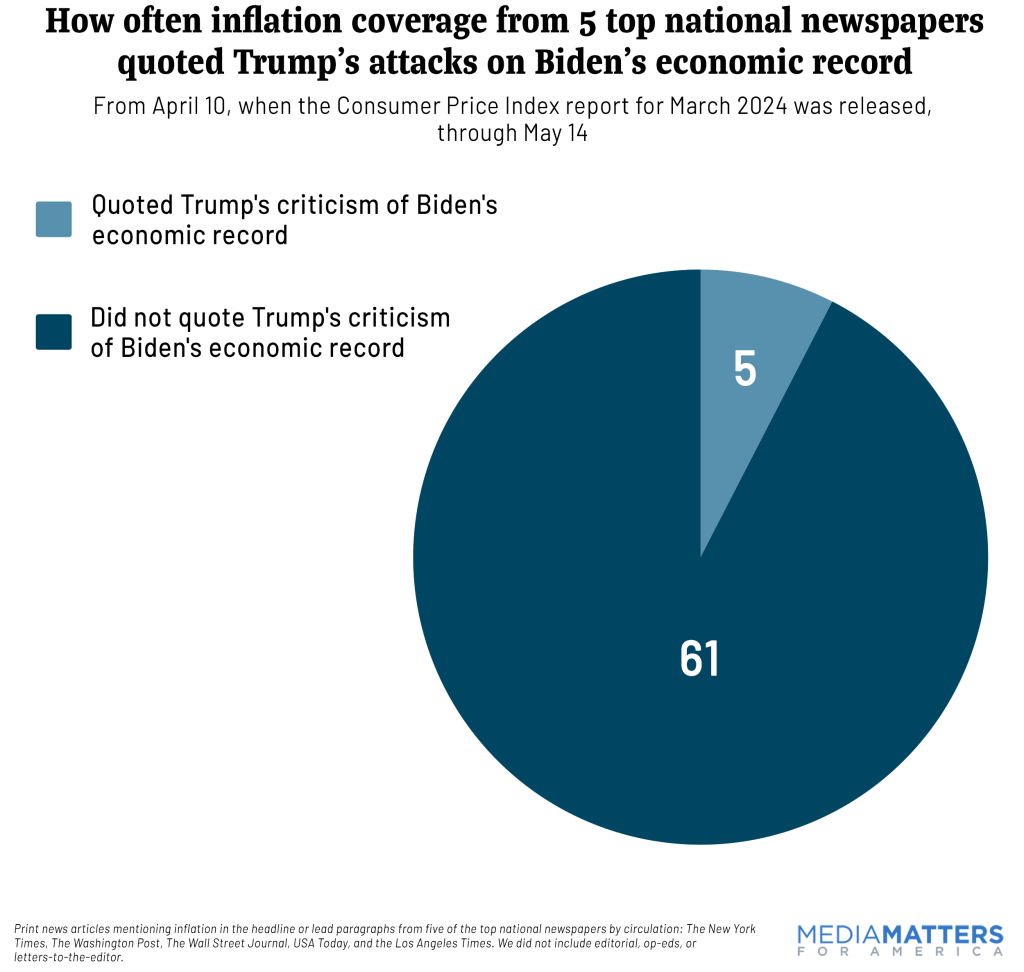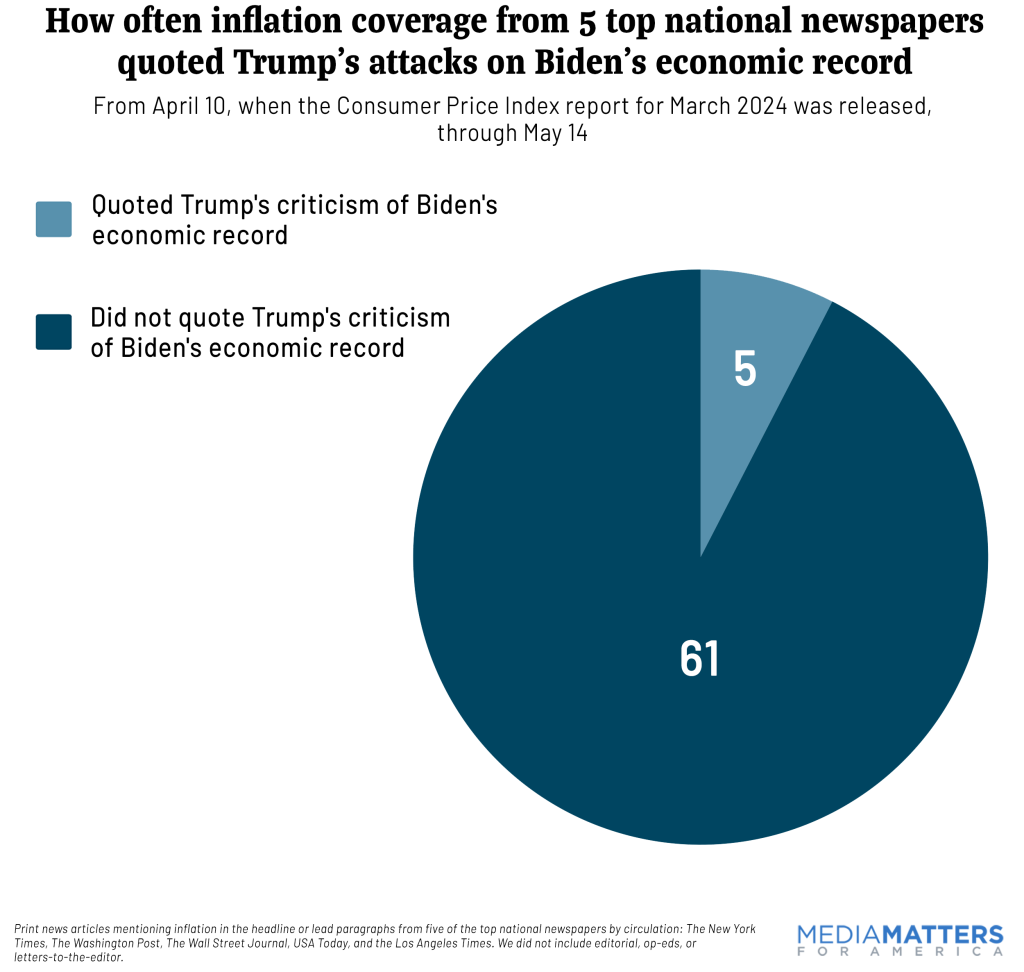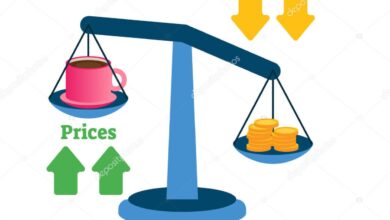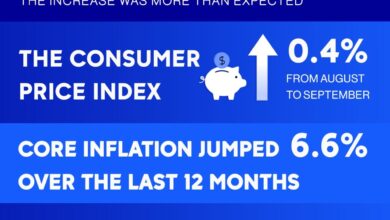Trump Inflation Consumer Price Impact
Trump inflation consumer prices: This in-depth look explores the impact of inflation on consumer prices during the Trump administration. We’ll examine historical inflation trends, CPI data, and how these factors affected various consumer groups, alongside government policies and external influences. Understanding the complexities of this period is key to analyzing economic shifts.
A detailed analysis will encompass historical inflation rates, consumer price index (CPI) trends, and the impact on different consumer segments. We will also examine government policies, external factors, expert opinions, and the effects on specific industries.
Historical Context of Inflation
Inflation, a persistent rise in the general price level of goods and services in an economy, has a long and complex history. Understanding past inflationary trends is crucial for analyzing current economic conditions and forecasting future patterns. This exploration examines the inflation landscape during the Trump administration, placing it within a broader historical context.The following analysis delves into the specifics of inflation rates during the Trump presidency, drawing comparisons to previous administrations.
Key economic events and policies during this period are examined, aiming to identify potential correlations between these factors and consumer price movements. The goal is to offer a comprehensive view of inflation’s trajectory during this time, highlighting both similarities and differences with earlier periods.
Inflation Rates During the Trump Administration
A detailed look at inflation rates from 2017 to 2020 reveals a mixed picture. While inflation wasn’t consistently high throughout the entire period, certain periods saw noticeable increases. Comparing these rates with those of previous administrations helps in evaluating the unique characteristics of this era.
Comparison with Previous Administrations
| Year | Inflation Rate (%) | Relevant Economic Events/Policies |
|---|---|---|
| 2017 | 2.1 | Tax Cuts and Jobs Act of 2017, initial phases of the administration’s economic policies. |
| 2018 | 2.4 | Continued implementation of economic policies, including tax cuts and deregulation. |
| 2019 | 1.8 | Trade disputes with China, growing concerns over global economic slowdown. |
| 2020 | 1.2 | COVID-19 pandemic, significant economic stimulus packages. |
The table above provides a snapshot of inflation rates during the Trump administration. Noticeable fluctuations occurred, demonstrating that inflation wasn’t a uniformly increasing trend. Factors like the tax cuts, global trade tensions, and the pandemic’s impact on the economy all contributed to the observed changes in inflation.
Major Economic Events and Policies
Several major economic events and policies transpired during the Trump presidency, potentially impacting consumer price trends. The Tax Cuts and Jobs Act of 2017, intended to stimulate economic growth, had the potential to influence inflation by boosting consumer spending. The administration’s trade policies, particularly the tariffs imposed on certain imported goods, also played a role in shaping price dynamics.
Additionally, the economic fallout from the COVID-19 pandemic, and the subsequent stimulus packages, significantly altered the economic landscape, and thus, price levels.These factors, along with others, created a complex interplay of influences on consumer prices during the Trump administration.
Consumer Price Index (CPI) Trends: Trump Inflation Consumer Prices

The Consumer Price Index (CPI) is a crucial economic indicator reflecting the average change over time in the prices paid by urban consumers for a basket of consumer goods and services. Analyzing CPI trends during the Trump presidency provides insights into the impact of economic policies on the cost of living for American households. Understanding the specific components of CPI that saw price fluctuations allows for a more nuanced view of the economic climate.CPI data offers a snapshot of the purchasing power of the dollar and how it affects various segments of the population.
Tracking price changes across different sectors gives us a comprehensive understanding of how inflation impacts daily life, from food and energy to housing and transportation.
CPI Data During the Trump Presidency
The Consumer Price Index (CPI) saw varying rates of change during the Trump presidency. While certain sectors experienced notable increases, others saw stability or even decreases. Analyzing the specific components of the CPI reveals a complex picture of the economic environment.
Key Sectors with Significant Price Changes
Several sectors within the CPI experienced noteworthy price fluctuations during this period. The impact of these changes varied significantly across different economic categories, affecting consumer spending habits and the overall cost of living.
- Energy: Fluctuations in energy prices, including gasoline and electricity, played a substantial role in CPI changes. These price swings often correlate with global market trends, geopolitical events, and domestic production levels.
- Food: Food prices are a significant component of the CPI. Factors such as agricultural production, supply chain disruptions, and seasonal variations all contribute to changes in food prices.
- Housing: Housing costs, including rent and homeownership expenses, can exert a strong influence on the overall CPI. Changes in interest rates, construction costs, and demand for housing can affect these prices.
- Transportation: Transportation costs, encompassing vehicle maintenance, fuel, and public transportation, are key indicators of economic health. Increases in these areas often reflect changes in global oil markets, production costs, and government regulations.
Components Contributing to Overall Inflation
The CPI’s overall inflation rate is a composite of various components. Examining these individual factors allows for a deeper understanding of the forces driving price changes.
- Energy Costs: Significant changes in energy costs, such as increases in gasoline prices, directly impacted the overall inflation rate. These fluctuations often correlate with global energy markets and geopolitical events.
- Food Prices: Changes in agricultural production, supply chain disruptions, and seasonal variations all contribute to changes in food prices, which are reflected in the CPI.
- Housing Costs: Increases in rent and homeownership expenses directly influence the overall inflation rate, reflecting shifts in interest rates, construction costs, and market demand.
CPI Data Table
The following table presents a simplified representation of CPI data during the Trump presidency, highlighting fluctuations across various sectors. Note that a full dataset would include more detailed categories and time points for a comprehensive analysis.
| Date | CPI Value | Sector |
|---|---|---|
| 2017-01-01 | 245.12 | Overall |
| 2017-01-01 | 248.56 | Energy |
| 2017-01-01 | 246.98 | Food |
| 2017-01-01 | 246.55 | Housing |
| 2017-01-01 | 245.89 | Transportation |
Impact on Different Consumer Groups
Inflation during the Trump presidency, like any period of rising prices, disproportionately impacted various consumer groups. The varying degrees of financial strain experienced were often shaped by pre-existing economic situations, access to resources, and the specific goods and services most affected by price increases. Understanding these nuances provides valuable insight into the economic realities faced by different segments of the population during this time.
Low-Income Households
Low-income households faced the most significant hardship during periods of inflation. Their budgets are typically more sensitive to price fluctuations, as a larger portion of their income is allocated to essential goods and services. Reduced purchasing power led to decreased access to necessities like food, housing, and healthcare. Increased costs for everyday items, such as groceries and transportation, squeezed already tight budgets.
For example, rising fuel prices disproportionately affected low-income households who often rely on personal vehicles for transportation. Limited savings and access to financial support mechanisms further exacerbated their vulnerability.
Middle-Class Families
Middle-class families, while not as severely impacted as low-income households, still experienced a noticeable reduction in purchasing power. Rising prices for housing, childcare, and healthcare put pressure on household budgets, potentially forcing trade-offs between essential needs and discretionary spending. Increased costs for staples like food and gas ate into their disposable income, impacting their ability to save or invest.
For instance, higher tuition fees for education, a significant expense for families with children, could have led to adjustments in their spending patterns.
High-Income Earners
High-income earners, generally, were less susceptible to the direct impacts of inflation. Their higher incomes often allowed them to absorb price increases without drastic changes to their lifestyle. However, even high-income individuals may have experienced inflationary effects on certain investments or purchases. For example, rising interest rates, while potentially beneficial in some contexts, could impact the returns on certain investments.
Moreover, increased prices for luxury goods or services could have reduced their discretionary spending. The impact on high-income earners might have been more noticeable in terms of investment strategies or wealth management adjustments rather than a direct and immediate change in living standards.
Government Policies and Actions
The Trump administration’s approach to inflation control differed significantly from previous administrations, focusing on different levers and strategies. Understanding these policies and their effectiveness is crucial for evaluating the broader economic landscape. The impact of these policies on various consumer groups and the overall economy remains a subject of ongoing debate and analysis.
Summary of Government Policies Related to Inflation During the Trump Administration
The Trump administration’s economic policies during its term were largely characterized by tax cuts and deregulation. These policies aimed to stimulate economic growth and job creation. A key component of this strategy was the Tax Cuts and Jobs Act of 2017, which significantly reduced corporate and individual income tax rates. This was intended to increase investment and consumer spending, thereby boosting economic activity.
Deregulation efforts were also pursued across various sectors, aiming to reduce burdens on businesses and potentially increase efficiency.
Effectiveness of These Policies in Controlling Inflation
The effectiveness of these policies in controlling inflation is a complex issue, with differing perspectives and analyses. Proponents of the approach argue that the tax cuts stimulated economic growth, leading to increased demand and potentially contributing to inflationary pressures. Conversely, critics suggest that the policies did not adequately address underlying inflationary factors, such as supply chain disruptions or increased demand exceeding supply.
Furthermore, the impact on inflation was often intertwined with other economic conditions, making it difficult to isolate the effect of specific policies.
Comparison with Policies of Other Administrations
Compared to other administrations, the Trump administration’s approach leaned towards fiscal stimulus, emphasizing tax cuts and deregulation. Other administrations often employed a mix of monetary and fiscal policies, with greater emphasis on central bank interventions to control inflation through interest rate adjustments. The effectiveness of different approaches in various economic contexts is a topic of continuous discussion among economists and policymakers.
Key Policies, Objectives, and Outcomes, Trump inflation consumer prices
| Policy | Objective | Outcome |
|---|---|---|
| Tax Cuts and Jobs Act of 2017 | Stimulate economic growth through reduced tax burdens on corporations and individuals. | Increased GDP growth in the short term, but also contributed to rising national debt. The impact on inflation was multifaceted and debated. |
| Deregulation across various sectors | Reduce regulatory burdens on businesses, potentially increasing efficiency and productivity. | Potentially reduced costs for some businesses, but the impact on inflation was not a primary objective and the overall effect is debated. |
| Trade Policies (e.g., tariffs) | Protect domestic industries and improve trade balance. | Caused uncertainty in global markets and potentially contributed to supply chain disruptions, with an effect on inflation that is debated. |
External Factors Affecting Inflation

Beyond domestic policies and economic conditions, external factors significantly impacted inflation during the Trump presidency. Global events, particularly those related to supply chains and commodity markets, played a crucial role in shaping the inflationary landscape. Understanding these external forces is key to a comprehensive analysis of the period’s economic trajectory.
Trump’s inflation and soaring consumer prices have been a hot topic lately, but honestly, sometimes I just want to talk about something else! Like, the absolute best waterproof dog raincoats for rainy day walks – seriously, a must-have for any dog owner. You can find the top picks for every size and breed here. Even though it’s important to keep up with the financial news, a happy, dry pup is a better mood booster than any economic report, in my opinion.
And maybe, just maybe, a good raincoat can help us all get through these tough economic times!
Global Events and Commodity Price Fluctuations
Global events, including geopolitical tensions and natural disasters, can disrupt supply chains and influence commodity prices. These disruptions, often cascading across multiple sectors, directly affect consumer prices. For example, a drought in a major agricultural region could push up food prices globally, impacting the cost of groceries for consumers. Similarly, trade disputes and tariffs can create bottlenecks in the supply chain, leading to increased costs for businesses and ultimately higher prices for consumers.
Trump’s inflation woes and soaring consumer prices are definitely a hot topic right now. But while the economy struggles, the Golden State Warriors, under Steve Kerr, aren’t about to sit still at the upcoming trade deadline. This means they’re likely to make some moves to bolster their chances for the playoffs, and that’s a big story in itself.
Ultimately, the Warriors’ actions, and the broader economic climate, will all likely have an impact on the current inflation and consumer price concerns.
Supply Chain Disruptions and their Impact
The global supply chain experienced significant disruptions during this period. These disruptions, driven by various factors such as trade wars, port congestion, and pandemic-related lockdowns, led to shortages of certain goods and increased transportation costs. Businesses struggled to maintain consistent inventory levels, leading to price increases for consumers. For example, shortages of semiconductors affected the production of automobiles, increasing their prices.
These issues, often interconnected, contributed significantly to the inflationary pressures experienced during the period.
Impact on Consumer Prices: A Detailed Analysis
The interplay of global events and supply chain disruptions significantly affected consumer prices. Increased commodity costs, particularly for energy and raw materials, directly translated into higher prices for goods and services. For instance, the price of oil, a key input for many industries, saw significant fluctuations, impacting transportation costs and the price of gasoline. These factors, combined with domestic economic conditions, influenced the overall inflation rate experienced by consumers.
Trump’s impact on inflation and consumer prices is a complex issue, with many factors at play. While discussing economic trends, it’s crucial to consider how robust security measures, like secure web gateway solutions , can protect sensitive data from potential breaches. Ultimately, understanding the interplay of economic factors and robust security infrastructure is key to navigating the current economic landscape.
Table: External Factors Influencing Inflation
| External Factor | Impact on Inflation | Period of Influence |
|---|---|---|
| Geopolitical Tensions | Increased uncertainty, potential supply chain disruptions, and volatility in commodity markets. | 2017-2020 |
| Trade Disputes/Tariffs | Disruptions in global trade flows, leading to increased costs for businesses and consumers. | 2018-2020 |
| Natural Disasters | Supply chain disruptions, impacting availability and pricing of goods. | Varying, depending on the specific event. |
| Pandemic-Related Lockdowns | Significant disruptions in global supply chains, leading to shortages and price increases. | 2020 |
| Commodity Price Fluctuations | Increased costs for raw materials and energy, impacting various industries and consumer goods. | 2017-2020 |
Analysis of Specific Industries
Inflation’s impact during the Trump presidency wasn’t uniform across all sectors. Different industries experienced varying degrees of price increases and decreases, influenced by factors like supply chain disruptions, geopolitical events, and government policies. Understanding these nuances is crucial for comprehending the overall economic picture of that time.Analyzing the specific industries affected by inflation during the Trump administration helps to understand the complexities of economic fluctuations.
This analysis explores how energy, housing, and food sectors were impacted, considering the contributing factors and the ripple effects on consumer spending and business operations.
Energy Industry
The energy sector saw fluctuating prices during the Trump presidency. Initially, a decline in oil prices was observed, primarily driven by increased global supply. However, this trend shifted as geopolitical tensions escalated and supply concerns emerged. The impact on consumer spending was noticeable, with lower gas prices leading to increased discretionary spending in other areas. Businesses in the energy sector experienced varying degrees of profitability, dependent on the prevailing market conditions.
Housing Industry
The housing market experienced a period of moderate growth during the Trump presidency. Factors such as low interest rates and a generally strong economy fueled demand, leading to increased home prices. However, supply chain issues and labor shortages in construction contributed to rising costs of materials and labor, ultimately impacting the affordability of housing. This impacted both consumers and businesses involved in the real estate market.
The rising costs made it harder for first-time homebuyers to enter the market, affecting consumer spending patterns.
Food Industry
The food industry was affected by a combination of factors, including rising input costs like labor and agricultural commodities. Supply chain disruptions and unfavorable weather patterns also contributed to price increases. The impact on consumer spending was significant, with families facing higher grocery bills, leading to adjustments in their budgets and purchasing habits. The food industry, as a whole, had to adapt to these shifting conditions, adjusting pricing strategies and sourcing options to maintain profitability.
Impact on Different Industries
| Industry | Cause of Inflation | Impact |
|---|---|---|
| Energy | Fluctuating global supply and demand, geopolitical tensions | Initially lower gas prices, later increased prices due to supply concerns. Varying profitability for energy companies. |
| Housing | Low interest rates, strong economy, supply chain issues, labor shortages | Increased home prices, affordability concerns for first-time homebuyers, impact on consumer spending. |
| Food | Rising input costs (labor, agricultural commodities), supply chain disruptions, weather patterns | Higher grocery bills, budget adjustments, adaptation by the food industry. |
Final Thoughts
In conclusion, analyzing Trump inflation consumer prices reveals a multifaceted picture. While various factors influenced inflation during this period, understanding the interplay between economic events, government policies, and external pressures is crucial. This analysis highlights the intricate nature of economic fluctuations and the challenges faced by different consumer groups.






